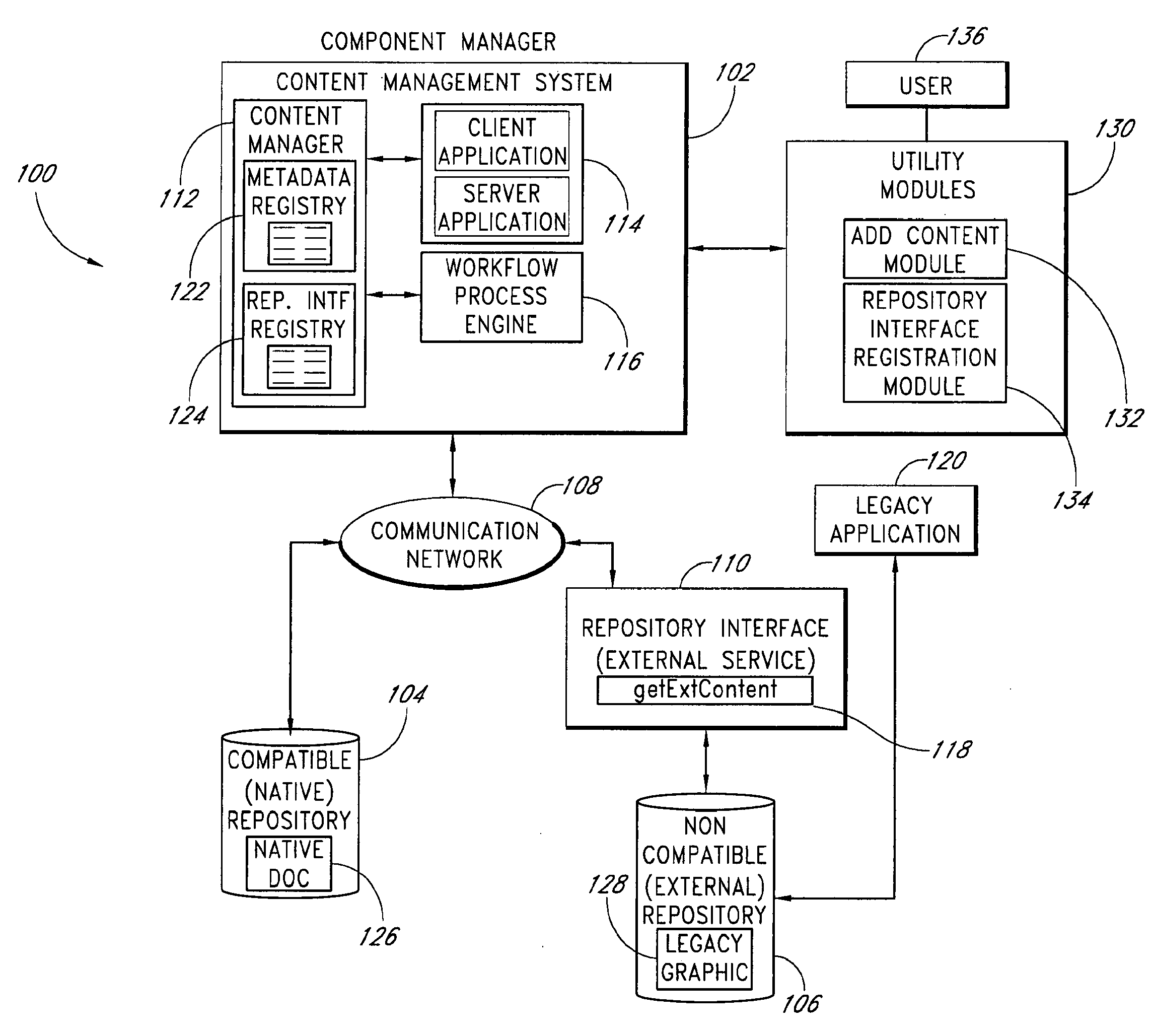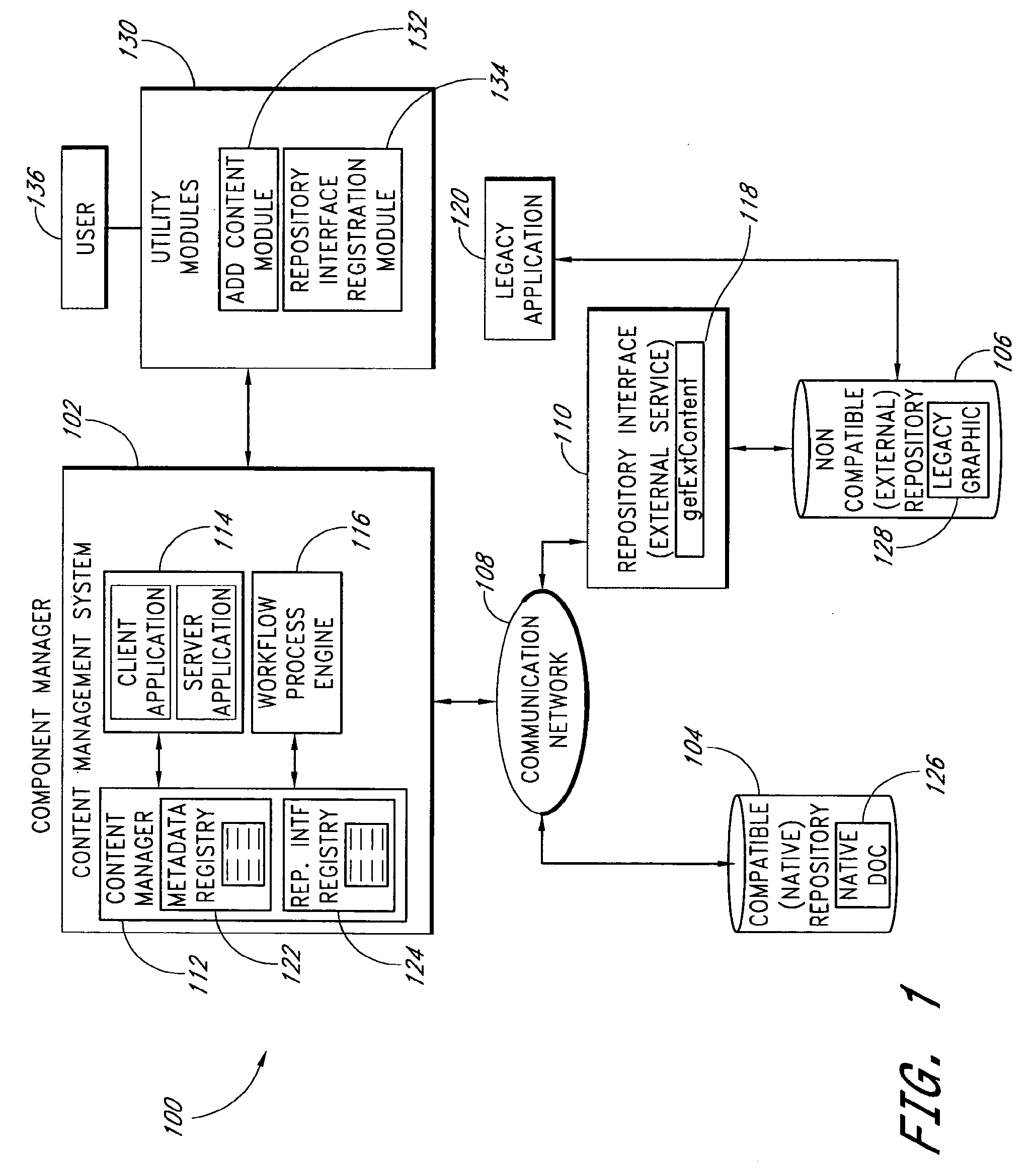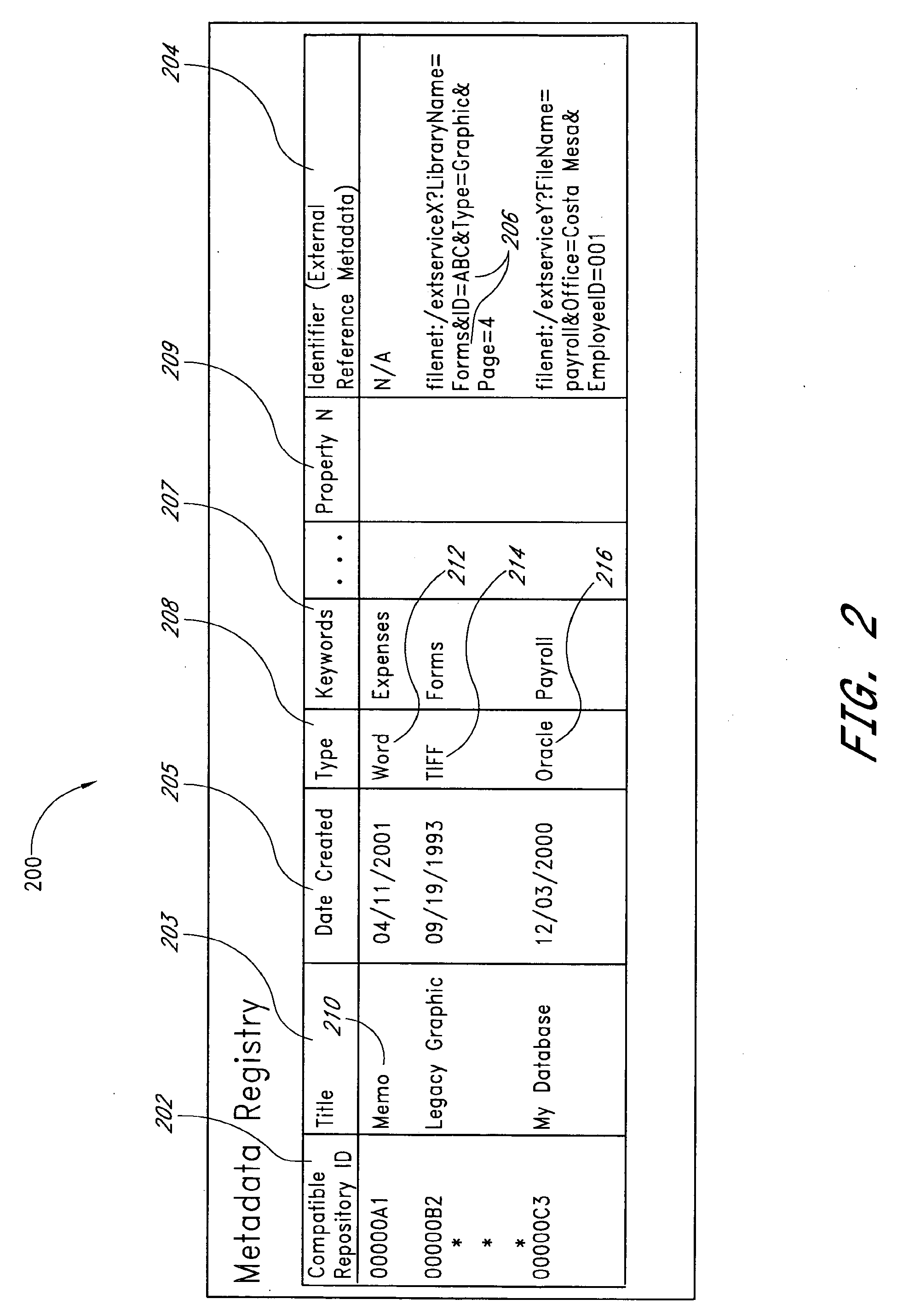System and method for accessing non-compatible content repositories
a content repository and non-compatibility technology, applied in the field of system and method for accessing non-compatibility content repositories, can solve the problems of increasing the burden on organizations to manage content, difficult accessing content outside of organizations, and difficulty for multi-departmental organizations to share content between and among departments. to achieve the effect of limiting the scope of invention
- Summary
- Abstract
- Description
- Claims
- Application Information
AI Technical Summary
Benefits of technology
Problems solved by technology
Method used
Image
Examples
Embodiment Construction
[0025]Often, in processing environments where one or more of content management systems, workflow processing systems, web content management systems, or the like organize, store and process content, content may be stored in any number and type of content repositories. An exemplary environment can include one or more processes, applications, or systems, that govern some or all of: content defining and handling; definable business process execution; security management; versioning; public and private web publication; performance monitoring; replication; storage management; legacy systems compatibility; and the like. In some environments, content may be added, manipulated, modified,” and deleted. Additionally, metadata describing and identifying the content, such as for example, an identifier, keywords for searching for the content, a location for the content, information about how, where, when, or by whom content is collected, stored, formatted, and the like may be added, manipulated,...
PUM
 Login to View More
Login to View More Abstract
Description
Claims
Application Information
 Login to View More
Login to View More - R&D
- Intellectual Property
- Life Sciences
- Materials
- Tech Scout
- Unparalleled Data Quality
- Higher Quality Content
- 60% Fewer Hallucinations
Browse by: Latest US Patents, China's latest patents, Technical Efficacy Thesaurus, Application Domain, Technology Topic, Popular Technical Reports.
© 2025 PatSnap. All rights reserved.Legal|Privacy policy|Modern Slavery Act Transparency Statement|Sitemap|About US| Contact US: help@patsnap.com



